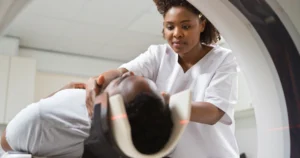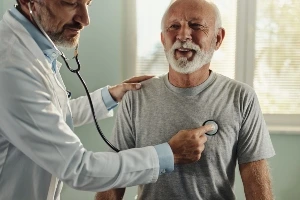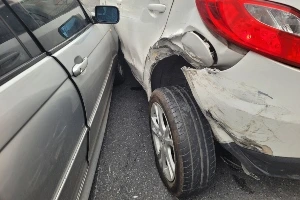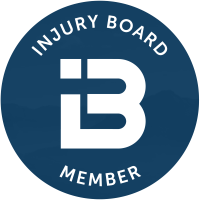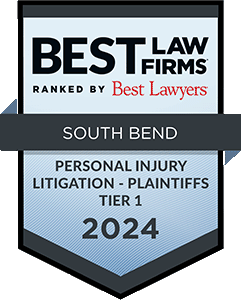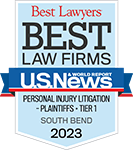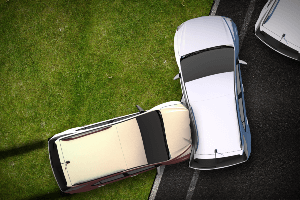 Side-impact collisions, better known as T-Bone accidents, often cause serious injuries because they often occur at high speed and the sides of most vehicles are not designed to withstand such an impact.
Side-impact collisions, better known as T-Bone accidents, often cause serious injuries because they often occur at high speed and the sides of most vehicles are not designed to withstand such an impact.
Liability for these crashes may fall to either driver, depending on several factors, such as the right of way and negligent actions before the crash. Sometimes liability is easily determined and other times it is not.
If you were injured in a T-Bone collision, you should speak to one of our knowledgeable South Bend car accident attorneys today to learn more about your legal options for pursuing compensation.
The consultation is free and there are no upfront fees.
What Are the Causes of T-Bone Accidents?
T-Bone car accidents are generally caused by the violation of right-of-way laws. Some of the most common right-of-way violations that may result in T-bone crashes include:
- Blocking another driver’s view
- Failure to yield
- Speeding
- Red-light running
- Aggressive or reckless driving
- Driving under the influence of drugs or alcohol
While most T-Bone accidents occur at intersections or while making a turn, some can also happen on highways or straightaways if one driver loses control of his or her vehicle and crashes into the side of another. T-Bone accidents may also happen in parking lots.
Factors That Help Determine Fault in a T-Bone Crash
Fault for a T-Bone accident is generally based on which driver acted negligently. In some cases, the fault may be shared by two or more parties.
It is important to establish which driver violated right-of-way laws when the accident occurred. At an intersection, for example, a driver making a left turn who does not yield to oncoming traffic may be at fault for the crash. This may be true even if he or she had a green light and his or her vehicle is the one that got hit by another. This is because oncoming traffic has the right of way at an intersection and those making a left turn must yield.
In the case of a driver losing control of a vehicle and T-Boning another vehicle, fault may be a little more complicated because it would depend on what caused the driver to lose control of his or her vehicle before the crash. It could be that another driver cut him or her off and forced a sudden reaction. It could also be that the driver was driving in a reckless manner and lost control of the vehicle. Depending on the circumstances, fault may be difficult to establish.
There may even be some instances when a third party not directly involved in the crash may be at fault. In a T-Bone accident caused by poor visibility, another party responsible for the obstruction could be at fault. For example, the owner of a stationary vehicle may be at fault for a T-Bone collision in the following scenario:
A driver attempting to make a left turn after coming to a full stop at an intersection where a vehicle is illegally parked and blocking the driver’s clear view of potential oncoming traffic. If the driver makes the turn, thinking the way is clear due to the obstruction of his or her line of sight, and another vehicle crashes into him or her, the owner of the illegally parked vehicle may be at fault.
Evidence to Prove Fault in a T-Bone Collison
The first thing you can do to help begin building your case is to call the police and file a report, so your version of events is officially documented. Then, if it is safe and you are physically able to do so, speak to any potential witnesses at the scene of the crash who may be able to back up your claim.
Take photos of the scene, too. Document damage to your vehicle and the other vehicle(s) involved in the crash. Get pictures of traffic signs, like stop signs or traffic lights, as well. These photos may be helpful later to prove another driver violated the right-of-way signs posted in the area.
In some cases, when it is difficult to determine fault from these other pieces of evidence, having an accident reconstruction expert on your side may be beneficial. However, expert testimony like this is usually not needed unless the case makes it to trial.
Call an Experienced Attorney
Proving someone else’s negligence resulted in a T-Bone collision that left you injured may be difficult if you do not know what evidence may be useful to help build your case for compensation.
Fortunately, our attorneys have decades of experience helping accident victims and know the type of evidence that may be beneficial to prove the negligence of another party.
Call (574) 444-0741 to schedule a free consultation.
